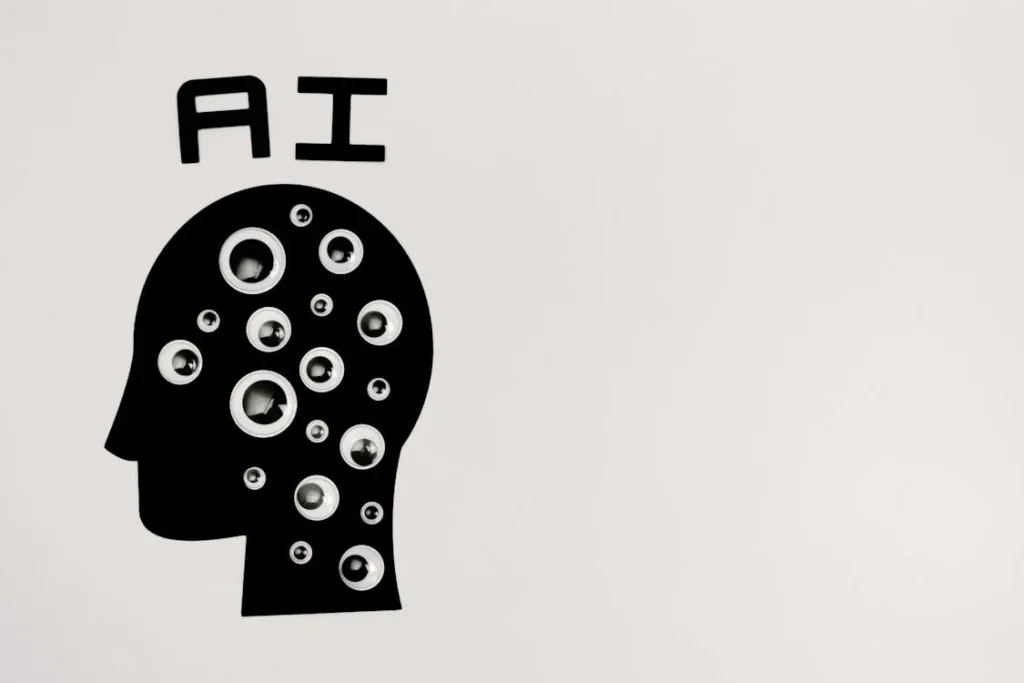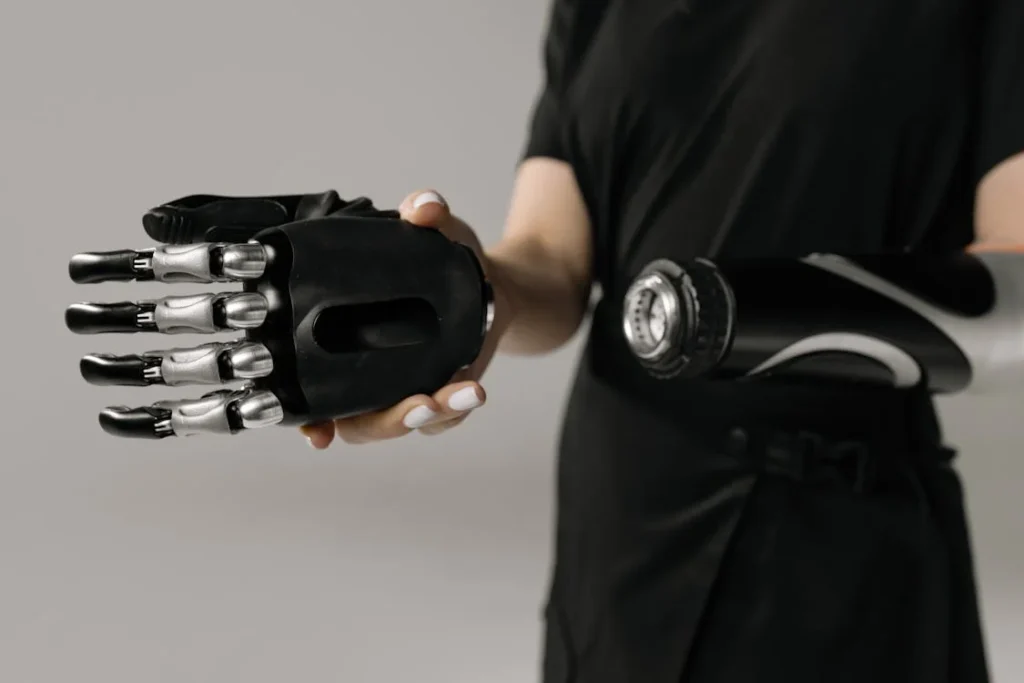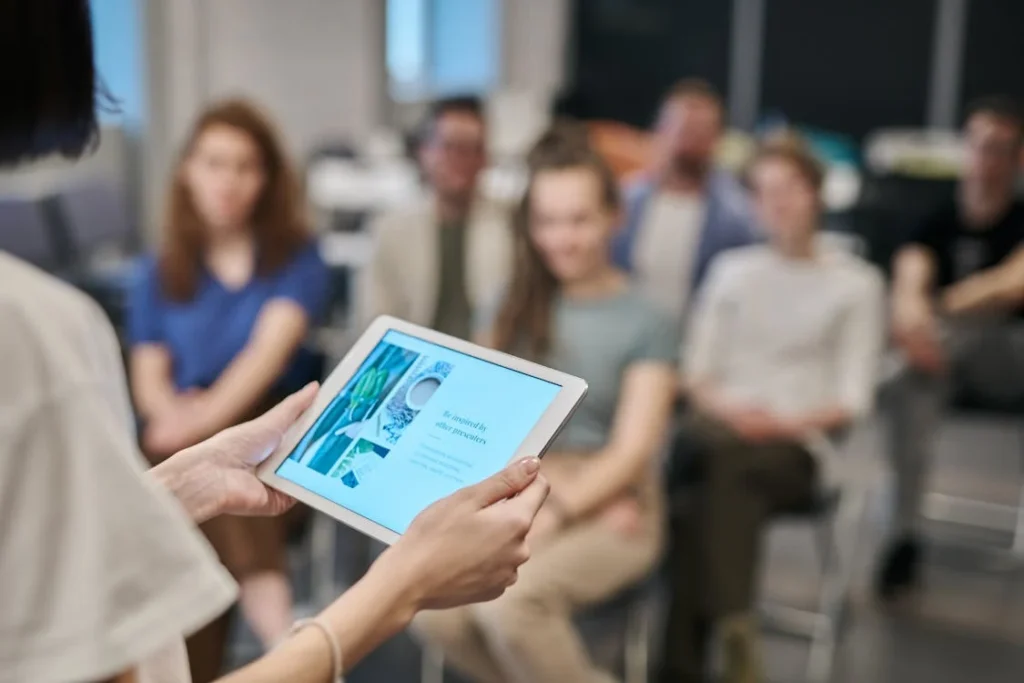Technology is changing the way we work, and artificial intelligence (AI) and automation are playing a crucial role in making workplaces more accessible. Employees with disabilities often face barriers that limit their ability to perform tasks efficiently. These barriers may be physical, digital, or related to communication. AI and automation are helping break down these obstacles, creating inclusive work environments where everyone, regardless of ability, can contribute and succeed.
From voice-controlled assistants to automated transcription services, smart technologies are allowing employees with disabilities to work more independently. Companies that integrate AI-driven accessibility solutions not only support their workforce but also enhance productivity and innovation.

AI-Powered Communication Tools for Workplace Accessibility
Effective communication is essential in any workplace, but for employees with disabilities, traditional communication methods can often present challenges. AI-powered tools are changing this by making interactions smoother and more accessible.
Employees with hearing, speech, or cognitive impairments can now communicate more efficiently, breaking down barriers that once made workplace collaboration difficult.
Real-Time Transcription and Captioning
One of the biggest breakthroughs in AI-driven accessibility is automatic speech recognition (ASR) technology. Employees who are deaf or hard of hearing often struggle with spoken communication in meetings, training sessions, or casual workplace discussions.
AI-powered tools like real-time transcription services provide instant captions, allowing them to follow conversations effortlessly.
Platforms such as Google Meet, Zoom, and Microsoft Teams now come with built-in live captions, which transcribe spoken words into text instantly.
These AI-powered systems continuously improve, learning different accents and speech patterns to ensure accuracy.
Some tools even allow users to customize settings, adjust font sizes, and highlight speakers, making it easier for employees with hearing impairments to engage fully in discussions.
AI-Powered Virtual Assistants
Employees with mobility impairments or speech difficulties can benefit from AI-driven virtual assistants such as Siri, Google Assistant, and Amazon Alexa.
These voice-activated tools help users perform tasks without needing to type or manually interact with a device. In the workplace, this means employees can schedule meetings, send emails, retrieve documents, or conduct web searches using simple voice commands.
For individuals with conditions such as cerebral palsy, multiple sclerosis, or spinal cord injuries, these AI assistants offer greater independence.
They eliminate the need for manual navigation, allowing employees to focus on their tasks without physical strain. Advanced AI assistants can even integrate with workplace software, automating repetitive tasks and increasing overall efficiency.
Speech-to-Text and Text-to-Speech Technologies
AI is also making written communication more accessible. Speech-to-text software enables employees with mobility impairments to dictate messages, emails, and reports without typing.
On the other hand, text-to-speech tools help visually impaired employees by reading aloud emails, documents, and web pages.
These tools ensure that employees can access and share information in a way that suits their individual needs.
AI-powered text-to-speech applications can even modify reading speed, adjust voice tones, and recognize different languages, making them highly adaptable for diverse workplace settings.

AI and Automation in Physical Accessibility
While AI-powered communication tools enhance digital accessibility, AI and automation are also making physical workplaces more accessible.
Employees with mobility impairments or visual disabilities often struggle with navigating office spaces, using standard workstations, or even entering buildings.
AI-driven solutions are transforming these experiences by introducing smart navigation, robotic assistance, and adaptive work environments.
AI-Guided Navigation for Employees with Visual Impairments
For employees who are blind or visually impaired, navigating large office buildings can be challenging. AI-powered navigation systems are solving this issue by providing real-time guidance using smart cameras, sensors, and voice commands.
Wearable AI devices like Envision Glasses and OrCam MyEye use computer vision to detect objects, read text aloud, and even recognize faces.
These assistive tools allow visually impaired employees to move around independently, access printed materials, and interact with colleagues more confidently.
AI-powered smartphone apps such as Microsoft Seeing AI and Google Lookout also help by identifying objects, currency, and surroundings, making workplace navigation easier.
Some companies are integrating AI-driven indoor mapping solutions that use beacons and smart sensors to guide employees through complex office layouts.
These systems provide voice or vibration-based directions, ensuring that visually impaired employees can reach their workstations, meeting rooms, or cafeterias without assistance.
Automated Workspaces and Smart Office Environments
AI and automation are making office spaces more adaptable by introducing smart workstations that adjust to individual needs. Employees with mobility challenges often require modifications to their desks, chairs, and devices.
AI-powered height-adjustable desks automatically detect the ideal height based on an employee’s seating position, reducing strain and improving comfort.
Voice-activated systems allow employees to control lighting, air conditioning, and even doors without physical effort. Smart office technology, integrated with AI, enables individuals with disabilities to create a personalized work environment that supports their needs.
Robotic Assistance for Employees with Mobility Impairments
AI-powered robotic assistants are becoming valuable tools for employees with mobility impairments. Exoskeletons, for instance, help individuals with limited movement regain mobility, allowing them to stand, walk, or perform physical tasks.
Companies like Ekso Bionics and ReWalk Robotics have developed wearable robotic exoskeletons that assist employees in standing or moving around more freely.
In workplaces where employees need to handle physical tasks, robotic arms and AI-powered prosthetics provide additional support.
These advanced robotic solutions enhance independence and reduce workplace fatigue, allowing employees with mobility impairments to perform their jobs with greater ease.

AI in Workplace Automation: Reducing Barriers to Employment
AI and automation are not just enhancing accessibility for existing employees—they are also creating new opportunities for individuals with disabilities to enter and thrive in the workforce.
Traditional job roles often come with physical or cognitive demands that can be challenging for some employees. AI-driven automation is reshaping these roles, allowing more people to participate in the workforce without unnecessary limitations.
AI-Driven Hiring Processes for Inclusive Recruitment
One of the biggest challenges for job seekers with disabilities is bias in the hiring process. Many recruiters unconsciously assume that candidates with disabilities will be less productive or require excessive accommodations.
AI is helping eliminate this bias by making hiring more data-driven and objective.
AI-powered recruitment tools analyze job applications based on skills and experience rather than physical abilities. Automated screening processes ensure that candidates are evaluated fairly, without human bias affecting the decision.
Some AI-driven platforms also offer alternative assessment methods, such as skill-based simulations or gamified evaluations, which allow candidates to demonstrate their abilities in non-traditional ways.
Virtual reality (VR) job interviews, powered by AI, are also emerging as an accessible alternative for candidates who struggle with traditional face-to-face interviews.
These platforms create a neutral, controlled environment where individuals can showcase their skills without worrying about inaccessible interview locations or biased interviewers.
AI-Powered Workflow Automation for Employees with Disabilities
AI-driven automation is reducing the workload of repetitive, manual tasks, allowing employees with disabilities to focus on more meaningful work.
Automated data entry, AI-assisted scheduling, and smart document processing help employees with cognitive or motor impairments work more efficiently.
For example, AI-powered email categorization and voice-activated task management help employees with dyslexia or motor disabilities manage their work with less strain.
Automated reminders and personalized workflow assistants ensure that employees stay organized and on track without unnecessary stress.
Flexible Work Solutions Through AI and Remote Work Technologies
The rise of AI-driven remote work tools has made it easier for employees with disabilities to work from home or in flexible settings.
AI-powered virtual collaboration platforms offer accessibility features such as automatic transcriptions, screen reading capabilities, and real-time language translation.
AI-driven time management tools also help employees structure their work schedules based on their needs.
For individuals with fatigue-related conditions or neurodiverse employees, AI-generated task prioritization helps balance workloads, preventing burnout while maintaining productivity.
As AI continues to evolve, workplace automation will further reduce employment barriers, allowing individuals with disabilities to fully participate in the workforce.
By integrating AI-driven tools, companies can create a more flexible, accommodating, and efficient work environment that benefits everyone.

The Role of AI in Enhancing Workplace Training and Skill Development
Training and professional development are crucial for career growth, but traditional learning methods are often inaccessible to employees with disabilities.
AI-powered training solutions are changing this by personalizing learning experiences, removing accessibility barriers, and ensuring that all employees can acquire new skills effectively.
Personalized Learning for Employees with Disabilities
AI-driven learning management systems (LMS) can tailor training programs to meet the specific needs of employees with disabilities.
Instead of a one-size-fits-all approach, these systems analyze an individual’s learning style, pace, and preferences to deliver customized content.
Employees with visual impairments, for instance, can receive audio-based learning materials, while those with dyslexia can access text-to-speech reading tools.
AI also adjusts learning difficulty levels based on employee performance. If an individual struggles with certain concepts, the system provides additional explanations or alternative teaching methods to reinforce understanding.
This ensures that all employees, regardless of their abilities, can progress at their own pace without feeling overwhelmed.
AI-Powered Virtual Training Assistants
Employees with disabilities may sometimes require additional support while learning new tasks. AI-powered virtual assistants act as on-demand trainers, answering questions, providing step-by-step guidance, and offering explanations in real-time.
These intelligent systems can help employees navigate new software, understand complex processes, or troubleshoot workplace challenges without needing constant human intervention.
For example, AI chatbots integrated into corporate training programs can provide instant answers to accessibility-related queries.
Employees can ask, “How do I enable screen reader support in this software?” and receive immediate, relevant guidance. This makes learning more independent and efficient.
Virtual Reality (VR) and Augmented Reality (AR) for Skill Development
AI-driven VR and AR technologies are creating immersive, hands-on training experiences for employees with disabilities. In industries where hands-on training is required, such as manufacturing or healthcare, VR simulations provide a risk-free way to practice skills.
For employees with mobility impairments, VR training can simulate real-world scenarios without requiring physical movement. Individuals can participate in virtual teamwork exercises, operate machinery, or practice client interactions from the comfort of their adaptive workstations.
AR applications, powered by AI, overlay real-time guidance on physical tasks. For example, employees with cognitive impairments can receive on-screen prompts when assembling equipment, ensuring they follow instructions correctly without needing direct supervision.
Accessible Certification Programs and Career Advancement
Professional certifications and career advancement programs often involve standardized exams that may not be designed for employees with disabilities.
AI-powered testing platforms now offer flexible exam formats, including voice-activated question answering, extended time options, and adaptive interfaces.
Companies can integrate AI-driven career coaching platforms that analyze an employee’s strengths and suggest personalized development plans.
By providing accessible certification pathways, organizations ensure that employees with disabilities have equal opportunities for career growth and leadership roles.
As AI and automation continue to evolve, workplace training and skill development will become more inclusive, empowering employees with disabilities to reach their full potential.

The Future of AI and Automation in Workplace Accessibility
As AI and automation continue to advance, the future of workplace accessibility looks increasingly promising.
These technologies are not only helping employees with disabilities overcome existing barriers but are also shaping a work environment where accessibility is built into every aspect of an organization.
The next phase of AI-driven accessibility will focus on predictive adaptation, deeper personalization, and stronger workplace integration.
Predictive AI for Proactive Workplace Adaptations
Currently, most accessibility solutions require employees to manually request accommodations. However, future AI systems will be able to anticipate accessibility needs before challenges arise.
Using machine learning, AI can analyze how employees interact with workplace systems and suggest modifications to improve their experience.
For example, AI could monitor an employee’s usage patterns and recommend adjustments such as increased font sizes, optimized screen contrast, or modified keyboard shortcuts.
Similarly, predictive AI could adjust workplace lighting, noise levels, or digital interfaces based on an employee’s specific sensory needs.
In physical workplaces, AI-driven smart offices will use IoT (Internet of Things) sensors to automatically adjust workspaces. Desks, chairs, and even climate controls will adapt to individual requirements, creating a seamless and fully accessible environment.
AI-Powered Emotional and Cognitive Support
Employees with neurodiverse conditions, such as autism or ADHD, often face challenges related to concentration, stress management, and sensory processing.
AI-powered mental wellness tools are emerging to provide personalized support, helping individuals manage their work more effectively.
AI-driven emotion recognition software can analyze an employee’s facial expressions and tone of voice to detect stress or fatigue. Based on this data, the system can recommend short breaks, calming exercises, or even suggest adjusting work schedules to prevent burnout.
For employees who struggle with focus and task management, AI can provide structured reminders, highlight priority tasks, and offer real-time guidance. These tools help employees stay on track while reducing the anxiety that often comes with workplace demands.
Seamless AI Integration into Everyday Workflows
In the future, AI-driven accessibility tools will be deeply embedded into everyday workplace operations rather than being treated as separate accommodations.
AI-powered meeting assistants will automatically generate real-time captions, summarize discussions, and provide accessible meeting notes for all employees.
Digital workplaces will feature AI-enhanced communication platforms that can instantly translate spoken and written text into multiple accessible formats, such as sign language avatars, simplified text for cognitive accessibility, or audio descriptions for visually impaired users.
Companies will also begin using AI-driven recruitment and training platforms that ensure employees with disabilities receive equal opportunities without facing bias.
Automated AI hiring systems will analyze skills and competencies rather than physical abilities, leading to a more inclusive workforce.
A Future Without Accessibility Barriers
The true potential of AI and automation lies in creating a world where workplace accessibility is no longer an afterthought but a natural part of how businesses operate.
Instead of reacting to accessibility challenges, AI-driven workplaces will proactively eliminate barriers, allowing employees with disabilities to work without limitations.
With the continued development of AI-powered assistive technologies, inclusive hiring practices, and automated workplace adaptations, the future of work will be more accessible than ever.
Businesses that embrace these innovations will not only support their employees but also foster a culture of diversity, productivity, and long-term success.

AI and Automation in Customer-Facing Roles for Employees with Disabilities
AI and automation are not only making internal workplace environments more accessible but also enabling employees with disabilities to take on customer-facing roles with greater ease.
Traditionally, many businesses have hesitated to place employees with disabilities in client interactions due to concerns about communication barriers or physical limitations.
However, AI-powered tools are breaking down these barriers, allowing employees to engage with customers confidently and efficiently.
AI-Powered Chatbots and Virtual Customer Support
For employees with speech impairments or mobility limitations, AI-powered chatbots are transforming customer service roles.
Instead of relying on traditional voice-based support, AI-driven chat interfaces allow employees to interact with customers through automated messaging systems. These tools handle routine inquiries while allowing employees to step in for more complex interactions.
For instance, a customer support representative with limited mobility can manage multiple conversations at once using an AI-powered chatbot.
The system can suggest responses, auto-fill customer details, and even translate messages into multiple languages, making the interaction smoother for both employees and customers.
Automated Voice Assistants for Speech Accessibility
Employees with speech impairments often face challenges in voice-based customer service roles. AI-driven voice assistants, such as Google Duplex and Amazon Lex, are now providing an alternative.
These systems can convert text input into natural-sounding speech, allowing employees to engage with customers in real-time without needing to speak themselves.
AI voice synthesis tools also allow employees to customize the tone, pitch, and pace of the automated voice, ensuring that their interactions feel personal and engaging.
This technology is particularly useful for employees with conditions such as ALS (Amyotrophic Lateral Sclerosis) or vocal cord impairments, enabling them to work effectively in roles that were previously inaccessible.
AI-Driven Sign Language Interpretation for Customer Engagement
Deaf or hard-of-hearing employees working in customer-facing roles can now leverage AI-powered sign language translation tools.
Real-time AI interpretation systems, such as SignAll, use computer vision and machine learning to translate sign language into text or spoken words. This allows employees to communicate seamlessly with customers who do not understand sign language.
Similarly, businesses can integrate AI-powered virtual sign language avatars on their customer support portals, ensuring that employees with hearing impairments can engage with customers through digital channels.
These innovations create a more inclusive work environment where employees with disabilities can interact with clients without barriers.
AI-Enhanced Retail and Hospitality Services
AI and automation are also making customer-facing roles more accessible in industries such as retail and hospitality.
Smart point-of-sale (POS) systems equipped with AI-powered voice recognition allow employees with mobility impairments to process transactions hands-free.
In hotels and restaurants, AI-driven kiosks and automated ordering systems enable employees with disabilities to manage bookings, take orders, and assist guests without physical strain.
These AI-powered solutions are not only improving accessibility for employees but also enhancing the overall customer experience. Businesses that integrate these technologies create a more inclusive environment for both employees and the customers they serve.

AI and Automation in Mental Health and Well-Being Support for Employees with Disabilities
Beyond physical and digital accessibility, AI and automation are also playing a crucial role in supporting the mental health and emotional well-being of employees with disabilities.
Many individuals with disabilities experience higher levels of workplace stress, anxiety, or isolation due to barriers in communication, accessibility, and social inclusion.
AI-driven mental health tools are helping employees manage these challenges, improving overall workplace engagement and satisfaction.
AI-Powered Mental Health Chatbots and Virtual Counseling
Many employees with disabilities may find it difficult to access mental health support due to mobility challenges, communication barriers, or a lack of inclusive therapy options.
AI-powered mental health chatbots like Wysa, Woebot, and Replika provide instant emotional support through conversations that help employees manage stress, anxiety, and work-related challenges.
These chatbots use natural language processing (NLP) to detect emotional distress and offer personalized guidance, mindfulness exercises, or coping strategies.
Unlike traditional therapy, AI-driven chatbots are available 24/7, allowing employees to seek support whenever they need it.
For employees who require human intervention, AI mental health platforms can also connect them with therapists or counselors trained in disability-inclusive mental health care.
This ensures that employees with disabilities receive the psychological support they need without facing accessibility barriers.
AI in Stress and Fatigue Detection for Employees with Disabilities
Workplace stress can significantly impact productivity, especially for employees with disabilities who may face additional challenges in their daily tasks. AI-powered stress detection tools analyze voice tones, typing patterns, and facial expressions to detect signs of fatigue or anxiety.
For example, some AI-driven wellness platforms monitor an employee’s work habits and suggest micro-breaks or relaxation techniques when stress levels appear high.
Wearable AI devices can also track physiological indicators such as heart rate and breathing patterns, alerting employees when their stress levels rise.
By integrating AI-driven stress detection into workplace wellness programs, companies can proactively support employees with disabilities, ensuring they have the resources and accommodations needed to maintain a healthy work-life balance.
Virtual Reality (VR) for Anxiety and Social Confidence Building
Employees with social anxiety, autism, or other neurodivergent conditions may struggle with workplace interactions, meetings, or presentations.
AI-driven VR training programs are helping individuals build social confidence by simulating real-life workplace scenarios in a controlled environment.
These AI-powered VR experiences allow employees to practice job interviews, team collaborations, or client interactions without the pressure of real-world engagement.
The AI system provides instant feedback, helping employees refine their communication skills, tone, and body language.
By using VR-based exposure therapy and AI-driven coaching, workplaces can empower employees with disabilities to feel more confident and comfortable in social settings.
AI-Driven Personalized Work Environments for Mental Wellness
AI is also helping employees with disabilities create personalized work environments that support their mental well-being. Smart office systems can adjust lighting, noise levels, and screen brightness based on an employee’s preferences.
AI-powered productivity assistants help structure workloads, set reminders, and prioritize tasks, reducing cognitive overload for employees with ADHD or neurological conditions.
By integrating AI and automation into mental wellness initiatives, businesses can create a more supportive and stress-free work environment for employees with disabilities.
These tools ensure that every employee, regardless of their unique challenges, has access to the support they need to thrive in the workplace.
Conclusion
AI and automation are transforming workplaces by making them more inclusive and accessible for employees with disabilities. From AI-powered communication tools and smart workspaces to virtual training assistants and mental health support, technology is eliminating barriers that once limited opportunities for individuals with disabilities. These innovations are not just improving accessibility—they are also fostering greater independence, productivity, and job satisfaction.
As businesses integrate AI-driven solutions, they must go beyond compliance and embrace accessibility as a core value. Investing in inclusive technology benefits both employees and organizations, leading to increased efficiency, innovation, and workplace diversity. AI-powered tools ensure that every employee, regardless of their abilities, has the opportunity to contribute meaningfully and grow in their career.
The future of work is one where accessibility is embedded in every aspect of the workplace, not as an afterthought but as a standard practice. Companies that lead in AI-driven accessibility will not only create better work environments but also set new benchmarks for inclusion and equality. Now is the time to harness the power of AI and automation to build a workplace where everyone can thrive.



